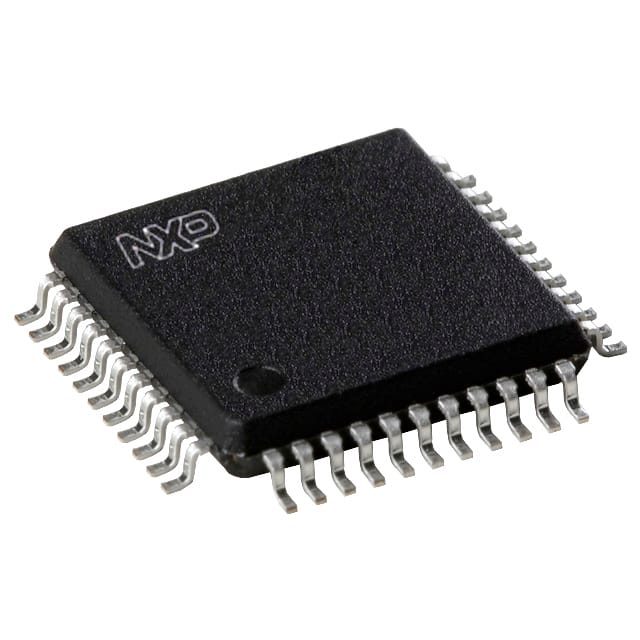Xem thông số kỹ thuật để biết chi tiết sản phẩm.

W78E058DFG
Product Overview
- Category: Microcontroller
- Use: Embedded systems, electronic devices
- Characteristics: High-performance, low-power consumption
- Package: Dual in-line package (DIP)
- Essence: Integrated circuit for controlling and managing electronic systems
- Packaging/Quantity: Typically sold in reels or trays containing multiple units
Specifications
- Architecture: 8-bit
- CPU Speed: Up to 20 MHz
- Program Memory: 8 KB Flash
- Data Memory: 256 bytes RAM
- I/O Pins: 32
- Timers/Counters: 3
- Communication Interfaces: UART, SPI, I2C
- Operating Voltage: 2.4V - 5.5V
- Operating Temperature: -40°C to +85°C
Detailed Pin Configuration
The W78E058DFG microcontroller has a total of 40 pins, which are assigned various functions such as power supply, input/output, communication, and control. The pin configuration is as follows:
- VDD: Power supply voltage
- VSS: Ground
- P0.0: General-purpose I/O pin
- P0.1: General-purpose I/O pin
- P0.2: General-purpose I/O pin
- P0.3: General-purpose I/O pin
- P0.4: General-purpose I/O pin
- P0.5: General-purpose I/O pin
- P0.6: General-purpose I/O pin
- P0.7: General-purpose I/O pin
- RST: Reset pin
- P1.0: General-purpose I/O pin
- P1.1: General-purpose I/O pin
- P1.2: General-purpose I/O pin
- P1.3: General-purpose I/O pin
- P1.4: General-purpose I/O pin
- P1.5: General-purpose I/O pin
- P1.6: General-purpose I/O pin
- P1.7: General-purpose I/O pin
- XTAL1: Crystal oscillator input
- XTAL2: Crystal oscillator output
- EA/VPP: External Access/Programming Enable
- ALE/PROG: Address Latch Enable/Program Enable
- PSEN: Program Store Enable
- P2.0: General-purpose I/O pin
- P2.1: General-purpose I/O pin
- P2.2: General-purpose I/O pin
- P2.3: General-purpose I/O pin
- P2.4: General-purpose I/O pin
- P2.5: General-purpose I/O pin
- P2.6: General-purpose I/O pin
- P2.7: General-purpose I/O pin
- RXD: UART Receive Data
- TXD: UART Transmit Data
- INT0: External Interrupt 0
- INT1: External Interrupt 1
- T0: Timer 0 External Input
- T1: Timer 1 External Input
- WR: External Data Memory Write Strobe
- RD: External Data Memory Read Strobe
Functional Features
- High-performance 8-bit microcontroller suitable for various embedded applications
- Low-power consumption, making it ideal for battery-powered devices
- Flexible I/O pins for interfacing with external components
- Multiple communication interfaces (UART, SPI, I2C) for data exchange
- Built-in timers/counters for precise timing operations
- Flash memory for program storage and RAM for data storage
- Reset pin for system initialization and recovery
Advantages and Disadvantages
Advantages: - High-performance and low-power consumption combination - Versatile I/O pins and communication interfaces - Ample program and data memory capacity - Suitable for a wide range of embedded applications
Disadvantages: - Limited processing power compared to higher-bit microcontrollers - Relatively small RAM size may restrict complex data manipulation
Working Principles
The W78E058DFG microcontroller operates based on the Von Neumann architecture. It consists of a central processing unit (CPU), program memory, data memory, and various peripherals. The CPU fetches instructions from the program memory, executes them, and manipulates data stored in the data memory. The microcontroller communicates with external devices through its I/O pins and interfaces.
Detailed Application Field Plans
The W78E058DFG microcontroller finds applications in various fields, including but not limited to: 1. Home automation systems 2. Industrial control systems 3. Automotive electronics 4. Consumer electronics 5. Medical devices 6. Internet of Things
Liệt kê 10 câu hỏi và câu trả lời thường gặp liên quan đến ứng dụng W78E058DFG trong giải pháp kỹ thuật
Sure! Here are 10 common questions and answers related to the application of W78E058DFG in technical solutions:
Q: What is the W78E058DFG microcontroller used for? A: The W78E058DFG microcontroller is commonly used in various technical solutions that require embedded control, such as industrial automation, consumer electronics, and automotive applications.
Q: What is the maximum clock frequency supported by the W78E058DFG? A: The W78E058DFG microcontroller supports a maximum clock frequency of 20 MHz.
Q: How much program memory does the W78E058DFG have? A: The W78E058DFG has 8 KB of on-chip flash program memory.
Q: Can I expand the program memory of the W78E058DFG? A: No, the program memory of the W78E058DFG cannot be expanded externally. However, it does support in-system programming (ISP) for firmware updates.
Q: What peripherals are available on the W78E058DFG? A: The W78E058DFG includes features like UART, SPI, I2C, timers/counters, GPIO pins, and an analog-to-digital converter (ADC).
Q: Does the W78E058DFG support interrupts? A: Yes, the W78E058DFG supports both external and internal interrupts, allowing for efficient handling of time-critical events.
Q: Can I use the W78E058DFG for low-power applications? A: Yes, the W78E058DFG offers various power-saving modes, including idle mode and power-down mode, making it suitable for low-power applications.
Q: What voltage range does the W78E058DFG operate at? A: The W78E058DFG operates at a voltage range of 2.4V to 5.5V, making it compatible with a wide range of power supply options.
Q: Is the W78E058DFG suitable for real-time applications? A: Yes, the W78E058DFG provides features like timers/counters and interrupt support, which make it suitable for real-time applications that require precise timing control.
Q: Are development tools available for programming the W78E058DFG? A: Yes, there are various development tools and integrated development environments (IDEs) available for programming and debugging the W78E058DFG, such as Keil, IAR Embedded Workbench, and SDCC.
Please note that the answers provided here are general and may vary depending on the specific requirements and documentation of the W78E058DFG microcontroller.

